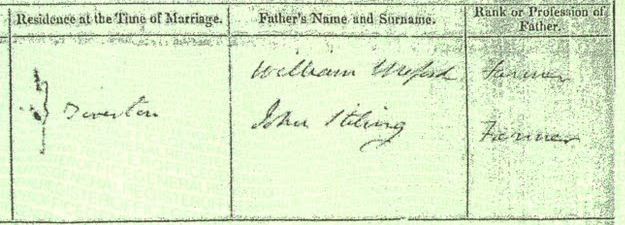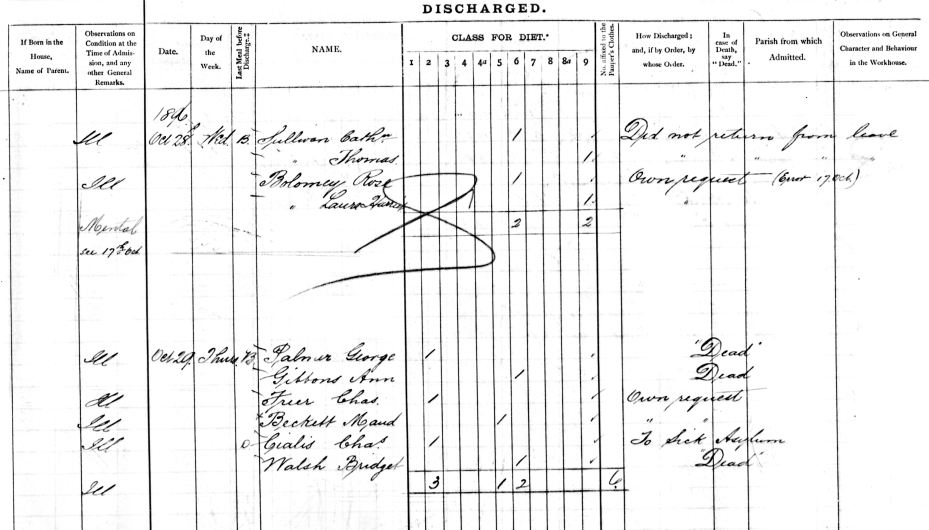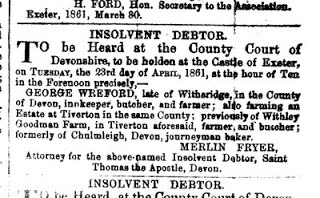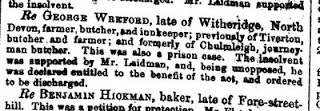For a change of ‘scene’, I decided to look a bit deeper at some of my English ancestors.
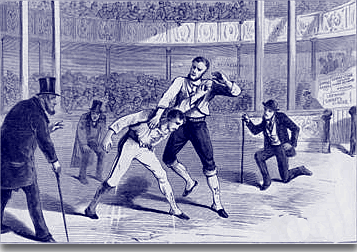
An old family pedigree mentioned that my ancestor, William WREFORD “settled in Tiverton and was well known in the last century as a noted wrestler“. I had searched for more information a few years back and was discovered a book which mentions him in this role – Devonshire Characters and Strange Events by S. Baring Gould.
William Wreford, at the age of eighteen, achieved reputation by throwing Jordan over his head with such force that Jordan came down with a “crash similar to that produced by felling an oak tree.” But Wreford met his match in a wrestle with “the little Elephant,” James Stone. Simultaneously the men grappled each other; and although Wreford had the advantage at the outset, he was hurled into the air, and fell with such violence on his back that for a time he was incapacitated from taking part in a similar contest. Eventually the return match came off at Southmolton, and Stone was again victorious. Nevertheless Wreford remained a prominent figure in the ring, and threw Francis Olver, a Cornishman, although he came out of the contest with several of his ribs crushed by the deadly “hug.” But a greater than Wreford and Jordan arose in the person of Abraham Cann… (p519)
Hoping to find more mention of William, I searched for James Stone – the ‘little elephant’. This lead me to a page bursting with information about wrestling – in particular, the Abraham Cann mentioned above. The Heard Family History site records:
In his history of Crediton, Venn (Venn, T.W., History of Crediton. Typescript. 1972) tells us that the activities of the Devonshire wrestlers in London were reported enthusiastically in the Society gossip columns. Dressed in the latest fashions they would promenade in the famous Vauxhall pleasure gardens, where much curiousity was shown to catch a sight of “these extraordinary Devonshire wrestlers”. Along with the bare-knuckle fighters, the wrestlers must have had the popular appeal of football stars of old, if not quite the overblown celebrity status accorded them in today’s tabloids. Certainly local papers reported their comings and goings, and we read of a triumphant return to Devon on the express coach Celerity in 1827, when the wrestlers were greeted by cheering crowds in Exeter (Heard Family History).
It’s funny to think of William, who is listed simply as ‘farmer’ and ‘labourer’ in the 1841 and 1851 censuses, as a celebrity. Also found on the Heard Family History site was this image of the wrestlers’ vital statistics at a fair in Tavistock,1827:

- Continue to research Devonshire Wrestling in and around the 1820s
- Search newspapers for wrestling matches

